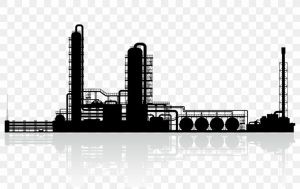


Impact of COVID-19 on the global petrochemical industry The Corona virus epidemic coincided with an industry that is currently entering a phase.
Adaptation to the next normal state requires management agendas that reflect the lessons learned from the first half of 2020.
The impact of COVID-19 on the world petrochemical industry
It will force petrochemical executives to reconsider the future of the industry.
There was a slowdown in demand growth, a growing surplus and a devaluation of the reservoir before the pandemic, and it only becomes more apparent.
In addition, the industry is undergoing a transformation from a transition to renewable energy sources and a regenerative or circular economy.
This paper examines the impact of pandemic disturbances – that is, declining demand and oil prices – on industry prospects
Explains short-term, medium-term (second half of 2020 to 2023) and long-term (after 2023).
Chemical industry leaders and financial investors should also have their own views and management agenda in order to focus on scenarios.
Update recovery, regional supply chain and capital efficiency.

The impact of COVID-19 on the world petrochemical industry
After the financial crisis of 2008, the petrochemical industry experienced a long and significant growth from 2010 to 2018, during which it grew by 8% per year.
High levels of use and optimal dynamics of raw materials eventually lead to the so-called supercirculation (when the petrochemical margins are larger than usual)
From 2016 to 2018.
In general, the use of industry (usually at the product chain level) determines marginal producers
And oil prices determine the slope of the cost curve in many product chains. Given these cases,
The following factors have played a role in the performance of the petrochemical industry:
In 2019, a significant increase in capacity and a slowdown in demand growth reduced the value of the industry.
This decline was further accelerated in 2020 with the COVID-19 epidemic.
The impact of the Corona virus on petrochemical demand in the value chains was erratic as automotive and construction applications declined sharply.
And the demand for packaging (especially in food, health products and medical applications) remained stable.
The latter reasons include storage, increased service delivery, and increased health-focused activities — all in response to the epidemic.
Despite the closure of several factories in specific geographical areas, industry players have coped well with short-term impact – and are now planning for the medium term.
Different levels of exposure to markets and end regions mean unequal impact on the demand side.
Order books for polyethylene devices
(Which produces products such as plastic containers for milk, motor oils and shampoos)
It was strong, while players in other value chains such as polyurethane
(Used for flexible and rigid foam panels, seals and washers), are still strong.
Witnessed a decline in demand. The supply side is less affected.
In fact, many petrochemical assets have survived the storm dramatically
Few of them are affected by supply chain disruptions.
Most companies have established a good balance between the physical distance and the working of plants to supply the necessary materials or materials needed to fight the epidemic.
However, several chemical companies have their own plants to produce and meet the increasing demand for isopropyl alcohol
(For disinfectants) and ethanol.
The short-term impact is well illustrated in the financial results of several petrochemical players from the first half of 2020.
Among the companies analyzed, interest before interest, taxes, depreciation and amortization (EBITDA)
With a decrease of three percent (compared to the first half of 2019)
1 In response, some industry leaders reduced operating and capital costs.
Although most companies take steps to meet the current economic climate, but
The focus should generally be on medium- and long-term strategies, capital plans and models
Be operational. It starts with a subtle understanding of future scenarios and the important elements that affect them.
Medium and long term effects of COVID-19:
Ways to recover
COVID-19
It reduced demand and oil prices.
The industry was entering a downturn in 2019.
In fact, industry volume fell by almost 45% due to declining demand growth, especially strong capacity building, which eventually led to low levels of utilization.
And oil prices fell in 2019.
Production of General purpose polystyrene with different grades

info@artanpetro.com
Qom Shokouhieh Industrial Town, end of the second phase, Babaei Square, Babaei St., Alam al-Huda St. 1, No. 1331
+982533346396![]()
+982533346473![]()